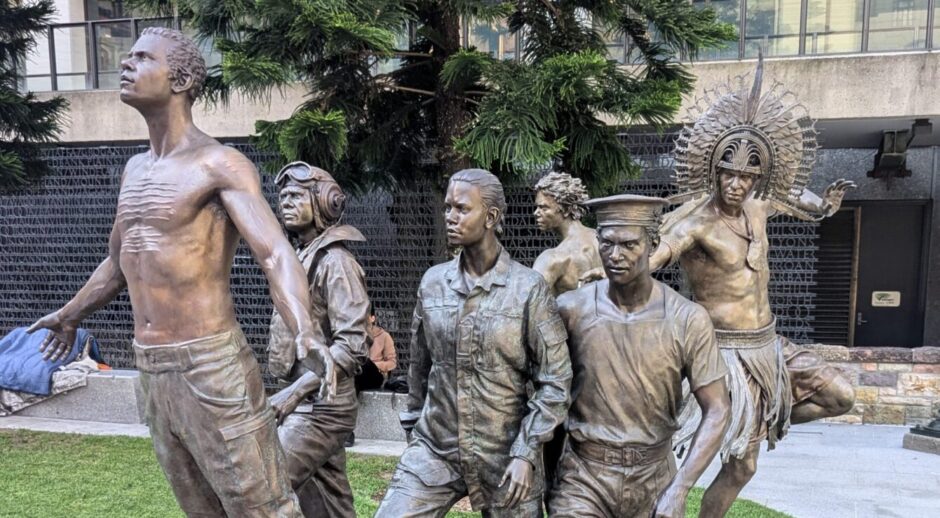Aboriginal people are advised that this feature contains the names of deceased people.
On 25 April each year, Australia and New Zealand mark ANZAC Day, commemorating the men and women who have served and died in wars, conflicts, and peacekeeping operations. Aboriginal people have served in every conflict and commitment involving Australian defence contingents since Federation. But many of these First Nations soldiers and have not been included in the history of war.
While exact numbers remain unknown as service records of the time did not list whether a soldier was Indigenous, the Australian War Memorial and the Australian Government’s Department of Veterans’ Affairs estimate that approximately 1,000 people—out of a probable Aboriginal population of 93,000 in 1901—served during World War I. Around 3,000–4,000 Aboriginal people are estimated to have served during World War II. This despite discrimination, exclusion, and laws that for a time prevented their enlistment.
Recognition for the courage of First Nations men and women in our wars is long overdue.
One such brave soldier was Kariyarra Ngarluma man Arnold Alexander Lockyer, born in Roebourne, Western Australia in 1915. Four of Arnold’s brothers would follow him to fight for Australia, though only three Lockyer brothers would make it home. Arnold enlisted in the Royal Australian Air Force in May 1942 and undertook an air gunnery course and operational training, leading to his promotion to sergeant and, eventually, Flight Sergeant.
Under the Empire Air Training Scheme, Lockyer was one of only three Indigenous pilots to fly missions across Europe and Asia. On 27 July, while conducting bombing raids in support of the Allied attacks on Borneo, Lockyer’s aircraft was brought down by Japanese anti-aircraft fire. Despite parachuting to safety, he was captured alongside two other crewmen and killed on 21 August 1945 at the age of 30. The guards responsible were later found guilty of war crimes. Lockyer is buried at the Ambon War Cemetery in Indonesia.
Brothers Larry and Lewis Farmer from Katanning were among 13 WA Indigenous soldiers to serve at Gallipoli. Their brother, Augustus Pegg Farmer, was the first Aboriginal soldier awarded the Military Medal for conspicuous bravery under fire. Only Lewis, and a fourth Farmer brother, Kenneth, survived the war.
First Nations soldiers enlisted for many reasons, from sheer bravery and patriotism to a desire for adventure. However, the military also offered an opportunity for Aboriginal people to access education, better pay, respect, and the possibility of being treated as equals during a time when they were not considered citizens.
But while Aboriginal people could die for their country, overall attitudes had not changed. After serving and returning home, equality was stripped, and Aboriginal veterans found themselves subject to discrimination once more. This included being banned from public places, not being allowed to vote, and, while not specifically excluded from the War Service Land Settlement Agreement, prejudiced assessment procedures meant many were rejected from the scheme. Reform was slow to happen, and practical changes were not seen until the Whitlam Government in 1972.
To this day, the full extent of contributions made by Aboriginal people throughout past war efforts and within the military is not known. Nonetheless, Aboriginal people continue to serve Australia through the military, both on homeland and abroad.

